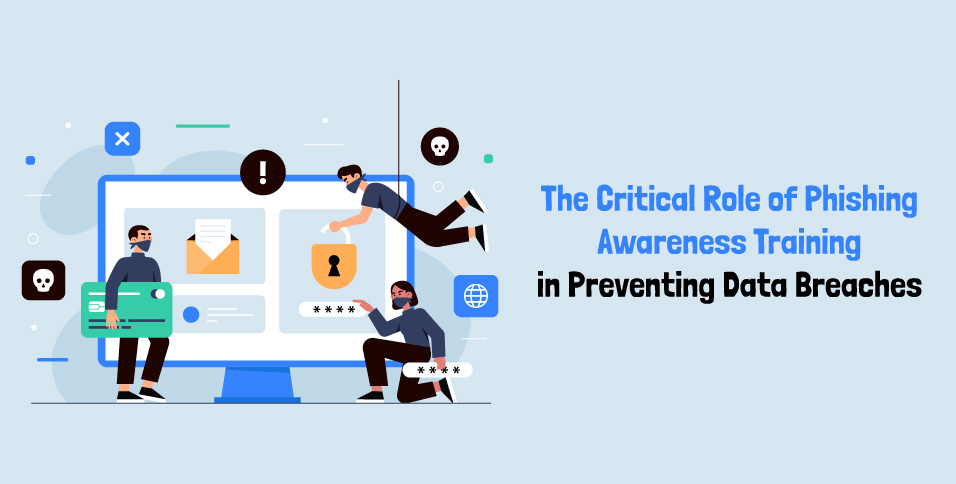In today’s digital age, businesses face the constant challenge of protecting themselves against data breaches, which can jeopardize sensitive information and assets and have severe repercussions on their image and finances. One common tactic used by cybercriminals to infiltrate systems is phishing. Proper training on recognizing and dealing with phishing plays a role in arming employees with the knowledge and skills to combat this threat effectively.
Understanding Phishing
What exactly is phishing awareness training? It is a common question asked by employees and employers alike. However, before dwelling into the training aspect, understanding what phishing is is crucial. Phishing is a technique employed by cybercriminals to deceive individuals into divulging details like passwords, credit card numbers, or social security numbers. These fraudulent activities often involve emails, text messages, or phone calls that impersonate trusted entities such as banks, social media platforms, or colleagues in an organization.
The Impact of Phishing Attacks
Phishing attacks are a leading cause of data breaches, with statistics indicating that more than 90% of breaches stem from phishing schemes. This underscores the importance of organizations prioritizing the implementation of cybersecurity measures to thwart these threats.
In addition to repercussions stemming from data breaches, businesses also risk enduring lasting harm to their reputation and customer loyalty. When a company that customers trust falls victim to a phishing attack, it can impact the individuals whose personal data is compromised. Rebuilding that trust can be a challenging process that requires a lot of effort from a public relations standpoint.
The Importance of Phishing Awareness Training
Training employees to recognize and combat phishing attacks is crucial for any organization’s security. These training programs provide staff with the knowledge they need to spot phishing attempts and take action.
Spotting Warning Signs in Emails
A focus of phishing awareness training is teaching employees how to identify signs of emails. This includes looking out for greetings like “Dear Customer” instead of using personalized greetings with the recipient’s name.
Moreover, employees are educated on the tactics scammers use to create urgency, such as threatening consequences for not acting. By arming staff with this information, they become better at spotting emails that raise flags due to their language or unusual requests.
Verifying Email Sender Authenticity
Another essential aspect addressed in phishing awareness training is verifying the authenticity of email senders before responding. Employees learn about domain spoofing and how scammers manipulate email addresses to make them appear legitimate.
By giving employees tools to confirm sender authenticity, organizations can lower the chances of falling prey to phishing attacks. When dealing with emails, it’s essential to verify email addresses and check them against trusted sources.
Maintaining Strong Passwords
Educating employees on the significance of having passwords is an aspect of phishing awareness training. They are encouraged to use passwords for different accounts and avoid sharing sensitive login details through email or other digital platforms. Additionally, incorporating two-factor authentication (2FA) can boost security measures. Help mitigate risks associated with compromised passwords.
Promoting Safe Internet Practices
Organizations should stress the importance of internet practices in training sessions to enhance defenses against phishing attacks. This includes educating individuals on avoiding links, refraining from visiting websites, and exercising caution when downloading files or attachments from unfamiliar sources.
Illustrating Real Life Scenarios and Simulations
To make phishing awareness training more engaging and practical for employees, real-world scenarios are often integrated into the sessions. These scenarios present phishing incidents encountered by businesses in industries.
Moreover, conducting phishing exercises can assess employees’ preparedness to recognize threats. By utilizing these simulations in a controlled setting, individuals can gain hands-on experience without being exposed to risks associated with attacks.
Continuous Training and Regular Updates
Although initial training sessions are crucial, it’s equally important to keep up with updates to stay ahead of the evolving tactics employed by cybercriminals. Phishing methods are constantly changing as scammers become more sophisticated, underscoring the need for cybersecurity training to ensure that employees are well-informed about the trends and strategies used by cybercriminals.
Summary
With data breaches posing a threat to businesses, the significance of phishing awareness training cannot be emphasized enough. By equipping employees with the knowledge and resources to effectively identify and counter phishing attacks, organizations can significantly reduce their vulnerability to this escalating risk. By focusing on recognizing signs of emails, verifying sender authenticity, practicing password security measures, adopting safe internet browsing practices that offer practical examples and simulations, and implementing routine updates, companies can proactively safeguard themselves against potentially devastating data breaches.














